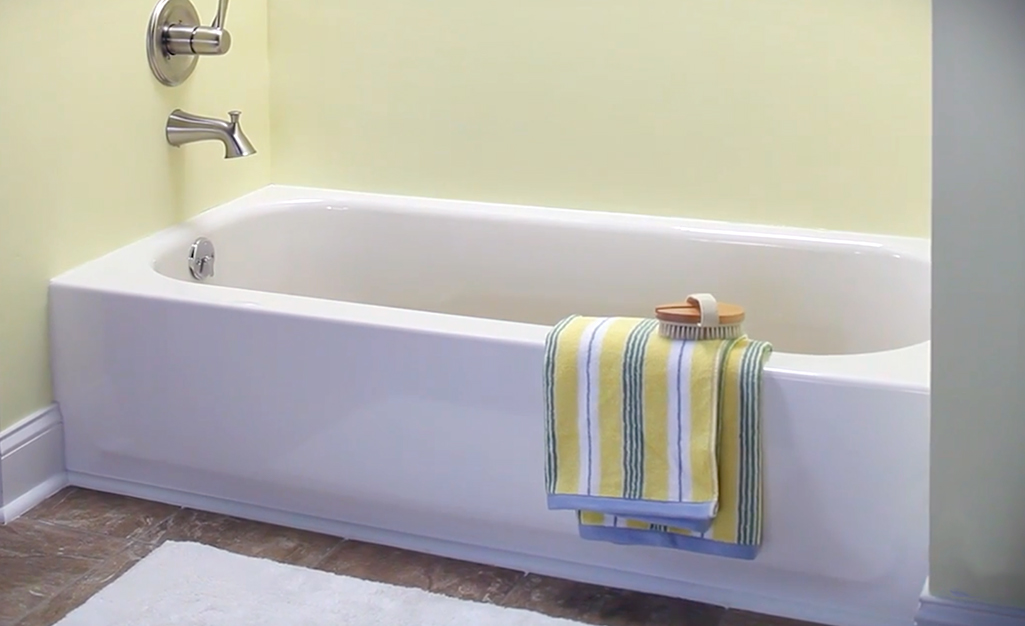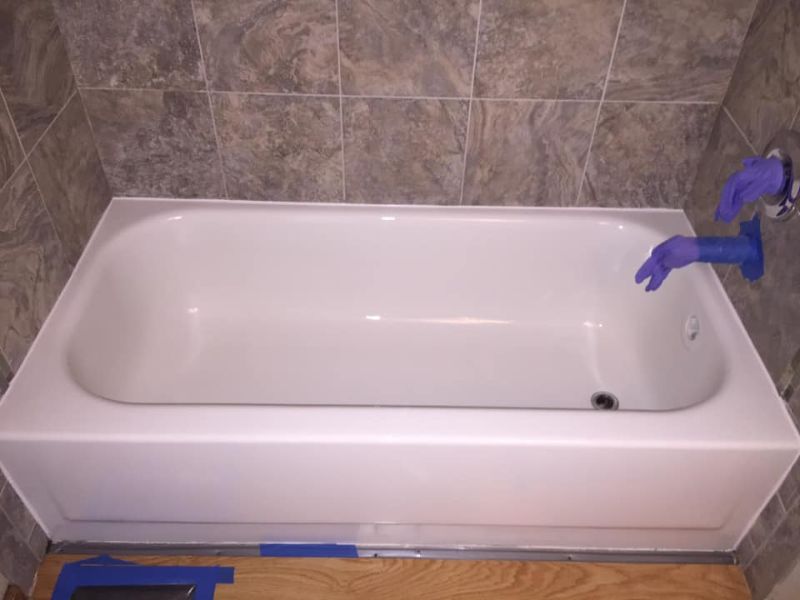The Foundation of Plumbing Knowledge for Bathtub Installation
The Foundation of Plumbing Knowledge for Bathtub Installation
Blog Article
Right here below you can get additional good additional info regarding A Step-by-Step Guide to Installing a Bathtub.

Installing a bath tub isn't exactly brain surgery, yet it does call for solid plumbing, carpentry, and also occasionally, tiling skills. Replacing an old bath tub with a brand-new one is also a moderately difficult job. If the old bathtub is readily accessible, the job can relocate rapidly; if you need to open up a wall to remove the old tub as well as place the brand-new bathtub, the task is a lot harder. In either instance, the task is within a residence handyman's abilities, although you will certainly need a helper to leave the old tub as well as set in the brand-new one. See to it you have actually qualified yourself for the job as well as are comfortable attempting it. As opposed to hiring a service provider to take over a halfway-completed project, it is much better to think about utilizing one prior to you start. Opportunities are you might require an expert plumber to make tube links.
This article will help you install a brand-new bath tub in your washroom if you have actually currently purchased a brand-new tub as well as don't need to alter the plan of your previous supply of water pipes.
Your tools and product list ought to consist of the following:
Getting ready for the Installation
Firstly, the sustaining frame supplied with the bathroom must be fitted (if called for) according to the producer's guidelines. Next, fit the taps or mixer to the tub. When suitable the tap block, it is very important to make sure that if the tap features a plastic washing machine, it is fitted between the bath and also the faucets. On a plastic bathroom, it is additionally practical to fit a supporting plate under the taps system to prevent pressure on the bath tub.
Fit the adaptable faucet ports to the bottom of the two taps making use of 2 nuts and also olives (occasionally provided with the tub). Fit the plug-hole outlet by smearing mastic filler round the sink electrical outlet hole, and afterwards pass the outlet with the hole in the bathroom. Make use of the nut supplied by the supplier to fit the plug-hole. Analyze the plug-hole outlet for an inlet on the side for the overflow pipe.
Next, fit completion of the adaptable overflow pipe to the overflow outlet. After that, screw the pipe to the overflow face which must be fitted inside the bathroom. Make certain you make use of every one of the provided washers.
Connect the catch to the bottom of the waste electrical outlet on the bath tub by winding the string of the waste electrical outlet with silicone mastic or PTFE tape, as well as screw on the trap to the outlet. Link the bottom of the overflow tube in a similar manner.The bath should now prepare to be suited its last setting.
Removing Old Touches
If you need to replace old faucets with new ones as a part of your installation, after that the first thing you need to do is detach the water system. After doing so, switch on the taps to drain pipes any type of water continuing to be in the system. The procedure of getting rid of the existing taps can be fairly problematic as a result of the restricted gain access to that is frequently the case.
Make use of a container wrench (crowsfoot spanner) or a tap device to undo the nut that links the supply pipelines to the faucets. Have a fabric prepared for the remaining water that will originate from the pipes. When the supply pipes have actually been gotten rid of, utilize the same device to loosen the nut that holds the taps onto the bath/basin. You will certainly require to stop the solitary taps from transforming during this procedure. Once the taps have actually been gotten rid of, the holes in the bath/basin will have to be cleansed of any old securing compound.
Before going on to fit the new faucets, compare the pipeline links on the old taps to the brand-new taps. If the old taps are longer than the brand-new faucets, then a shank adapter is required for the brand-new taps to fit.
Setting up the Bath tub
Making use of both wooden boards under its feet, position the bathtub in the needed setting. The wooden boards are valuable in equally spreading the weight of the tub over the area of the boards rather than focusing all the weight onto four small points.
The following objective is to make certain that the bath tub is leveled all round. This can be attained by examining the level as well as readjusting the feet on the bath tub up until the spirit level reviews degree.
To set up taps, fit all-time low of the furthest adaptable faucet port to the ideal supply pipeline by making a compression sign up with; then do the same for the various other tap.
Activate the water system and examine all joints and brand-new pipework for leaks as well as tighten them if essential. Fill up the tub as well as additionally check the overflow electrical outlet and also the regular outlet for leakages.
Finally, repair the bath paneling as explained in the maker's user's manual. Tiling as well as sealing around the bath tub should wait till the bathtub has been utilized at the very least once as this will settle it right into its final position.
Fitting New Taps
If the tails of the new taps are plastic, then you will need a plastic port to stop damages to the string. One end of the adapter fits on the plastic tail of the faucet and also the various other end supplies a link to the existing supply pipes.
If you need to fit a monobloc, then you will require decreasing couplers, which connects the 10mm pipeline of the monobloc to the conventional 15mm supply pipe.
Next, position the faucet in the installing hole in the bath/basin guaranteeing that the washing machines remain in place in between the tap and the sink. Safeguard the tap in position with the maker offered backnut. As soon as the tap is firmly in position, the supply pipes can be attached to the tails of the faucets. The faucets can either be attached by using corrugated copper piping or with regular faucet adapters. The former kind must be linked to the tap finishes initially, tightening up just by hand. The supply pipelines can later on be attached to the various other end. Tighten up both ends with a spanner after both ends have been linked.
Tiling Around the Tub
In the area where the bathroom meets the tile, it is necessary to secure the accompanies a silicone rubber caulking. This is important as the installation can move sufficient to break a rigid seal, creating the water to permeate the wall between the bathroom and the tiling, leading to issues with dampness as well as possible leakages to the ceiling listed below.
You can choose from a range of coloured sealants to assimilate your components as well as installations. They are sold in tubes as well as cartridges, as well as are capable of securing gaps approximately a width of 3mm (1/8 inch). If you have a larger space to load, you can fill it with spins of drenched newspaper or soft rope. Remember to always load the bath tub with water before securing, to allow for the motion experienced when the bathtub is in use. The sealant can split fairly very early if you do not take into account this activity prior to sealing.
Alternatively, ceramic coving or quadrant tiles can be used to border the bath or shower tray. Plastic strips of coving, which are easy to use as well as cut to dimension, are additionally easily readily available on the market. It is suggested to fit the tiles making use of water-resistant or waterproof glue as well as grout.
Bathtub Installation
How Important Is A Bathtub To Your Home?
High-quality baths, showers, and other bathroom updates are necessary when considering a smart investment in your home. It’s a room that you go to every day and one that is constantly being used by guests.The bathroom is one of the top trafficked rooms in a home and also one of the most valuable in terms of home resale.
Install Piping Before Tub
You will be using your existing drain and waste vent system, but pipes required include the hot and cold water supply lines and a pipe leading to a shower head. A mixing valve and shower head are also needed. Air chambers may be required.
Position the Tub
Lower the tub into place so that the continuous flange fits against the wall studs and rests on 1’x4' or 2’x4' supports. Anchor the tub to the enclosure with nails or screws inserted through the flanges into the studs.
NOTE: Remember, bathtubs and shower stalls may require support framing. A bathtub filled with water is extremely heavy, so check building codes and framing support before installing the tub.
Assemble Drain Connections
Assemble the bathtub drain connections by connecting the tub overflow with the tub drain above the trap, not beyond it. The trap will have a compression fitting that screws over the arm of the overflow assembly.
Place a Pipe For the Shower Head
First, locate a brass female threaded winged fitting and attach it to a framing support via a screw or a nail. Then run a pipe up the wall for the shower head. Sweat or solder the other side of the brass fitting to the top of the pipe.
Attaching Hot and Cold Water Lines
Attach your water lines for both hot and cold by sweating these directly into the hot and cold ports of the mixing valve. The mixing valve will be how water enters the tub’s system, not by the pipes themselves.
Install the Spout
Extend a piece of 1/2 inch pipe, or whichever length is specified in the manufacturer’s instructions, for the tub spout. Sweat on a male threaded fitting at the end of the pipe or use a brass nipple of the proper length and a 1/2 inch cap.
NOTE: At this point you should have your rough-in plumbing work inspected before proceeding further.
Check For Leaks
Restore the water pressure and check the drain connection and the supply pipes for any sign of leaking.
estore the Bathroom Wall
Replace the wall with moisture-resistant drywall as a base for your wall covering. Seal the joints between the wall and your new tub with silicone caulk as protection against water seepage.
https://www.berkeys.com/2016/12/02/bathtub-installation-dallas/

I stumbled upon that piece of writing about How to Install a Bathtub Yourself when doing research the search engines. Loved our write up? Please share it. Let somebody else find it. Thanks so much for your time spent reading it.
Tap leaks? Inform. Report this page